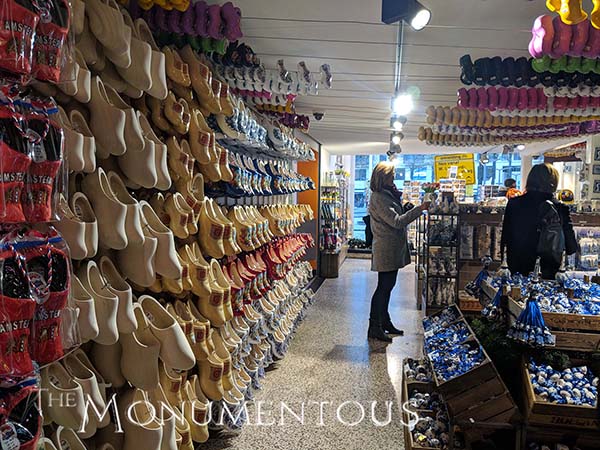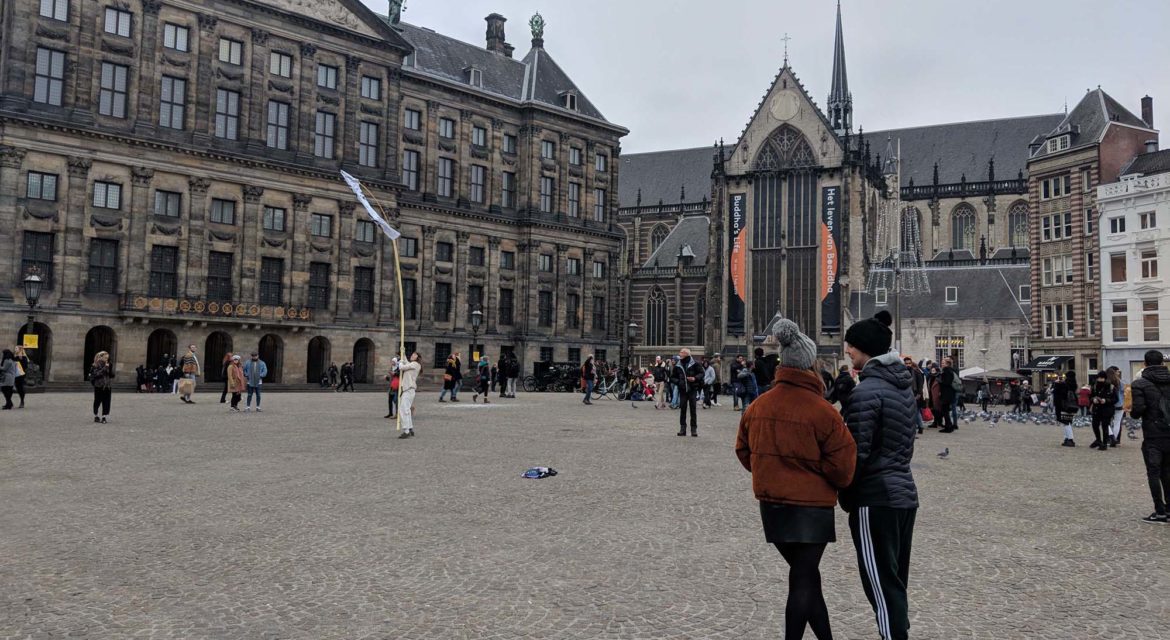 Dam Square is a town square in Amsterdam, the Netherlands, which has become a focal point for the history and culture of the city. It contains several notable buildings as well as the National Monument, which was created as a memorial to people who served in World War II. By providing residents and tourists with a central place to experience the past and present of the city, Dam Square has created a powerful economic and cultural hub for the entire region.
Dam Square is a town square in Amsterdam, the Netherlands, which has become a focal point for the history and culture of the city. It contains several notable buildings as well as the National Monument, which was created as a memorial to people who served in World War II. By providing residents and tourists with a central place to experience the past and present of the city, Dam Square has created a powerful economic and cultural hub for the entire region.

A Dam on the Amstel River
The history of Dam Square stretches back to 1270 when the area contained an actual dam that formed the first connection between settlements on both sides of the Amstel River. The dam gave the square its name, and the name “Amsterdam” was eventually derived from the combination of the dam and Amstel River.
 Over the decades, the dam was built up and became wide enough for a town square. The rectangular shape of dam square is the result of it being the combination of two squares, which comprised of what used to be the actual dam as well as a plaza to the west of it. Dam Square subsequently became a hub of commercial activity but also housed numerous government offices, including town hall.
Over the decades, the dam was built up and became wide enough for a town square. The rectangular shape of dam square is the result of it being the combination of two squares, which comprised of what used to be the actual dam as well as a plaza to the west of it. Dam Square subsequently became a hub of commercial activity but also housed numerous government offices, including town hall.
Since the former mouth of the Amstel River was partially filled in the 19th century, Dam Square has been surrounded by land on all sides. That enabled the creation of a war memorial in 1856, which was eventually replaced by the National Monument in 1956. In 2009, the monument became an official national heritage site of the Netherlands.
This history is just part of what makes a visit to Dam Square such a memorable experience for both residents and visitors.

The Attractions and Appeal of Dam Square
While the National Monument is the central focus of Dam Square, it’s hardly the only attraction in the area. The Royal Palace (Koninklijk Palace) is no longer home to the Dutch Royal family, but the grand 17th-century building is still used to hold official receptions. The New Church (Nieuwe Kerk) and the Beurs van Berlage are just a couple of the other notable sights in the Square.
While these buildings have significant historical and cultural relevance, the National Monument is undoubtedly the most popular piece in the Square, and it stands out in every way imaginable. The Monument features an unmistakable concrete conical pillar that is covered entirely by white stone. On the front of the pillar is a relief entitled De Vrede (“Peace”), consisting of four chained male figures, representing the suffering endured during the war.
 In front of the monument, on either side, are two sculptures of lions on circular pedestals, symbolizing the Netherlands as a whole. A semicircular wall surrounds the backside of the monument. The wall stores soil from all of Netherlands provinces as well as from the Dutch East Indies. The wall has a Dutch-language inscription, a text by the poet Adriaan Roland Holst. Above the central relief is a sculpture of a woman with a child in her arms and doves flying around her, representing victory, peace, and new life. A relief of the backside of the pillar shows doves ascending into the sky, symbolizing the liberation.
In front of the monument, on either side, are two sculptures of lions on circular pedestals, symbolizing the Netherlands as a whole. A semicircular wall surrounds the backside of the monument. The wall stores soil from all of Netherlands provinces as well as from the Dutch East Indies. The wall has a Dutch-language inscription, a text by the poet Adriaan Roland Holst. Above the central relief is a sculpture of a woman with a child in her arms and doves flying around her, representing victory, peace, and new life. A relief of the backside of the pillar shows doves ascending into the sky, symbolizing the liberation.
The National Monument has attracted audiences of all types from across the world for decades, but the experiences that people can have at the site are very different at night when the Monument is lit in spectacular fashion. Similar to other monuments that enable different experiences in the day and night, visitors to Dam Square can see completely different sides of the Monument and the Square at night.
These experiences are part of the reason that Dam Square has been able to have such a powerful impact on the economy and culture of Amsterdam as a whole.
The Events and Economics of Dam Square
 Dam Square has become a hub for all sorts of economic activity, which range from stores that sell items specifically designed for tourists to coffee shops catering to locals to restaurants that appeal to everyone. By creating a single place for residents and visitors to congregate, countless shops and stores have been able to set up businesses to create a tremendous economic impact for the city.
Dam Square has become a hub for all sorts of economic activity, which range from stores that sell items specifically designed for tourists to coffee shops catering to locals to restaurants that appeal to everyone. By creating a single place for residents and visitors to congregate, countless shops and stores have been able to set up businesses to create a tremendous economic impact for the city.
That economic activity isn’t just limited to the physical stores since different events and happenings take place in Dam Square depending on the time of year. In the spring, carnivals that feature attractions and rides occur on a regular basis, while in the summer, a variety of street performers come out to surprise unexpected onlookers. Additionally, a national Remembrance of the Dead ceremony is held at the National Monument every year on May 4th to memorialize the casualties of World War II and subsequent armed conflicts.
Since Dam Square is located near other notable Amsterdam attractions like the Rijksmuseum, the Anne Frank House and the Van Gogh Museum, it has come to function as the starting place and meeting point for visitors from all over the world. As the functional center of the Netherlands and the heart of Amsterdam, Dam Square provides visitors with a destination that serves as a sensible beginning spot for their discovery of the city.
Residents and visitors have been making these discoveries for centuries, to the point that entire books have been written about the history and cultural significance of the area. Books like De Dam, by Fred Feddes, explore this history and significance in great detail and represents a legacy that goes beyond the monuments and shops contained in the area.

The Legacy of an Attraction and Symbol
 Just like the “I amsterdam” sculptures, Dam Square has come to serve as an important attraction for visitors, while also being a powerful symbol for residents of the city. While Amsterdam has a collection of notable art and monuments, Dam Square has become one of the most well-known and important locations in the city and the country. It showcases what it can mean to see what would otherwise just be empty space transform into something much more.
Just like the “I amsterdam” sculptures, Dam Square has come to serve as an important attraction for visitors, while also being a powerful symbol for residents of the city. While Amsterdam has a collection of notable art and monuments, Dam Square has become one of the most well-known and important locations in the city and the country. It showcases what it can mean to see what would otherwise just be empty space transform into something much more.


